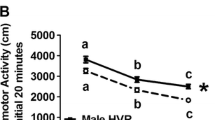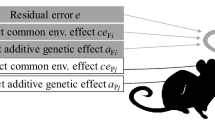Abstract.
The effects of genetic selection for high wheel running (13th generation) and prolonged access (8 weeks) to running wheels on food consumption and body composition were studied in house mice (Mus domesticus). Mice from four replicate lines selected for high wheel-running activity ran over twice as many revolutions per day on activity wheels as did mice from four replicate control lines. At approximately 49 days of age, all mice were placed individually in cages with access to wheels and monitored for 6 days, after which wheels were prevented from rotating for the "sedentary" individuals. During the experiment, five feeding trials were conducted and body mass was measured weekly. After 8 weeks, body composition was measured by hydrogen isotope dilution. Across the five feeding trials, mice in the "active" group (wheels free to rotate) consumed 22.4% more food than mice in the "sedentary" group (wheels locked); mice from the selected lines consumed 8.4% more food than mice from the control lines (average of all trials; body mass-corrected values). In females, but not males, we found a significant interaction between selection and wheel access treatments: within the "active" group the difference in food consumption between selected and control animals was greater than in the "sedentary" group. At the end of the study, mice from the "active" and "sedentary" groups did not differ significantly in body mass; however, mice from the selected lines were approximately 6% smaller in body mass. Estimated lean body mass did not differ significantly either between selected and control lines or between wheel-access groups (P>0.3). Mice from selected lines had lower total body fat compared to mice from control lines (P=0.05; 24.5% reduction; LSMEANS) as did mice from the "active" compared to "sedentary" group (P=0.03; 29.2% reduction; LSMEANS). Under these conditions, a sufficient explanation for the difference in body mass between the selected and control lines was the difference in fat content.
Similar content being viewed by others
Author information
Authors and Affiliations
Additional information
Electronic Publication
Rights and permissions
About this article
Cite this article
Swallow, .J., Koteja, .P., Carter, .P. et al. Food consumption and body composition in mice selected for high wheel-running activity. J Comp Physiol B 171, 651–659 (2001). https://doi.org/10.1007/s003600100216
Accepted:
Issue Date:
DOI: https://doi.org/10.1007/s003600100216




